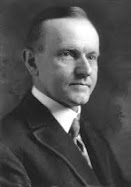This statue of Lincoln is a block away from my new apartment (finding that out was a great surprise). It's called "Young Lincoln," which I think is why he's so chesty (top 3 buttons!) and he's holding a book. I walk by it about thrice in a given week, and if there aren't skateboarders hanging around I always say hi.
It gives me a legitimate emotional boost to walk by and see young Lincoln. More than once it has noticeably lightened a dark mood. I don't know, seeing him there just makes me think that I should go about my day in an optimistic, productive, deliberate, and uncomplaining manner.
Now that I love Grant with all my heart and soul, I wonder what it would be like to walk by him every few days. He'd probably be pictured (carved? portrayed?) in a camp chair, in his messy uniform, looking kind of determined and unkempt. I don't think seeing him would giving me national anthem feelings, like young Abe up there, I think it would make me want to sit down beside him and be like "Duuuude, my Target card bill is insaaaane. But that ottoman is really essential to my living room, you know? I'll just have to pass on those herringbone Toms I guess."
This is the fundamental difference between Lincoln and Grant. Lincoln was and remains a man whose wisdom and vision existed above the fray. Even when the fray was his job. Grant's more of a fraymaster. He in fact floundered when not in the fray, when not dealing with a thousand tiny problems. In the classic comparison between the hedgehog and the fox, Lincoln is the hedgehog, Grant the fox.
The introduction to Carl Sandburg's one-volume biography of Lincoln is a kind of recap of all the hagiography that sprang up in the early 20th century. He gets compared to mountains, to the sea, to the rulers of Rome. It's a little crazy. And yet, as the awesomely named Gamaliel Bradford puts it, "He still smiles, and remains impenetrable."
I do love Grant more, because I feel that I know him better. A mysterious man he was not, but he was such a good man. The two main issues of his presidency were Reconstruction and the western war with the Native Americans, and he approached both situations with as much magnanimity and grace as anyone in the country could have done. (Watching him try so earnestly to reform white/Indian relations when it was far too late was the most bittersweet reading experience of this project so far.) I will miss them both, as I reluctantly leave the Civil War era behind for the Rutherford B. Hayes era.


